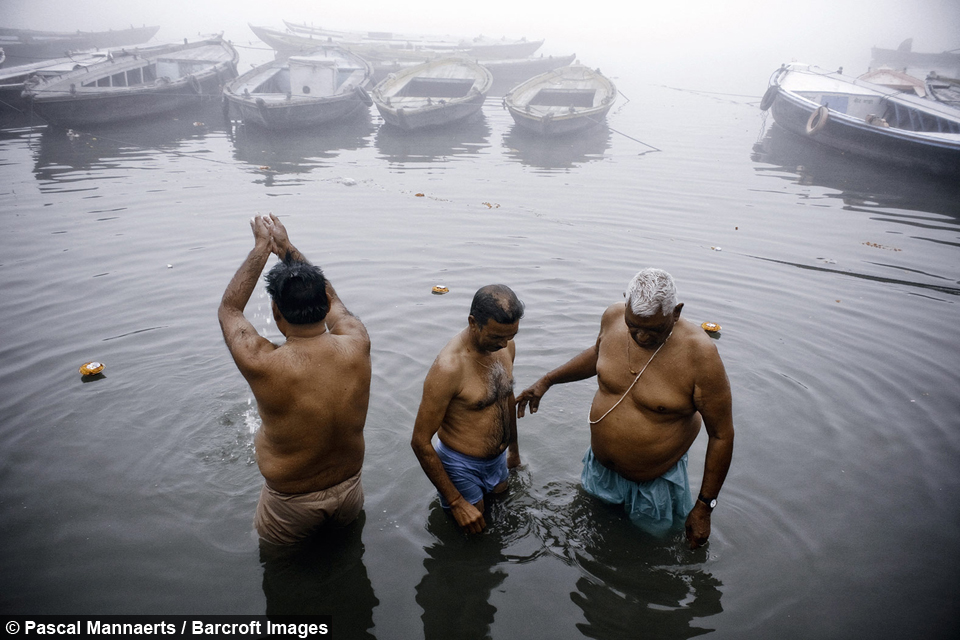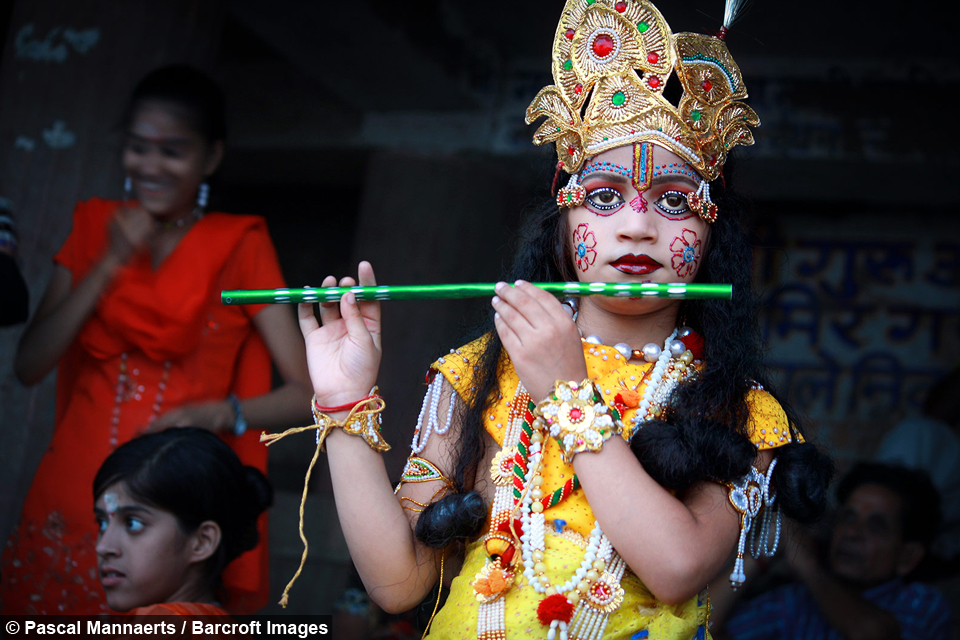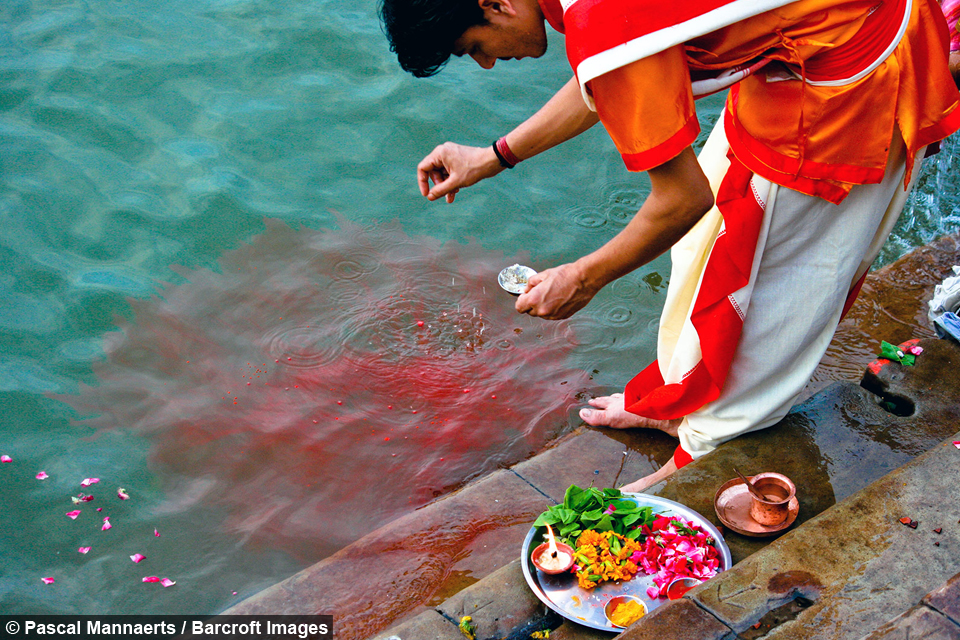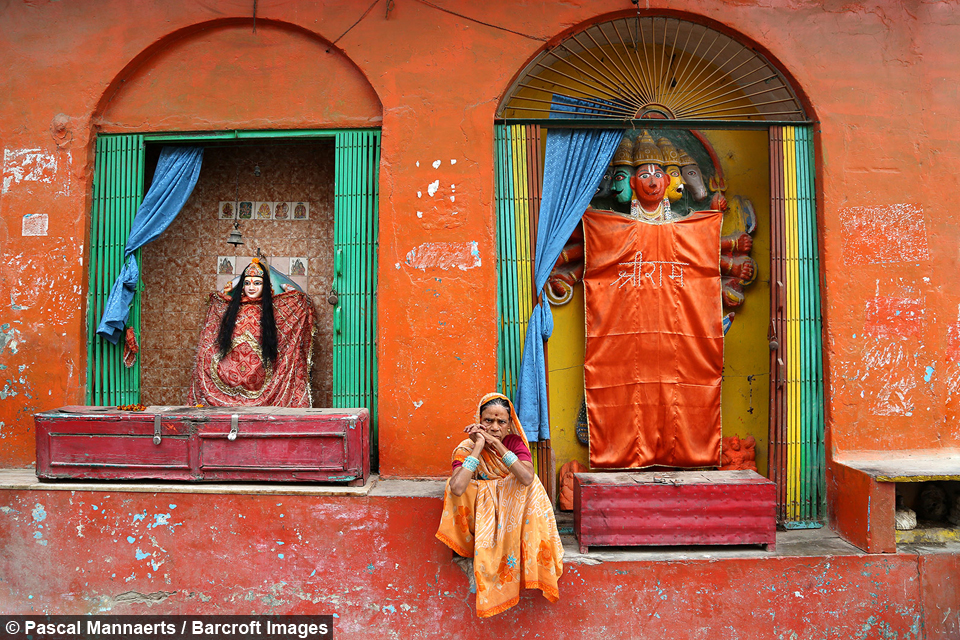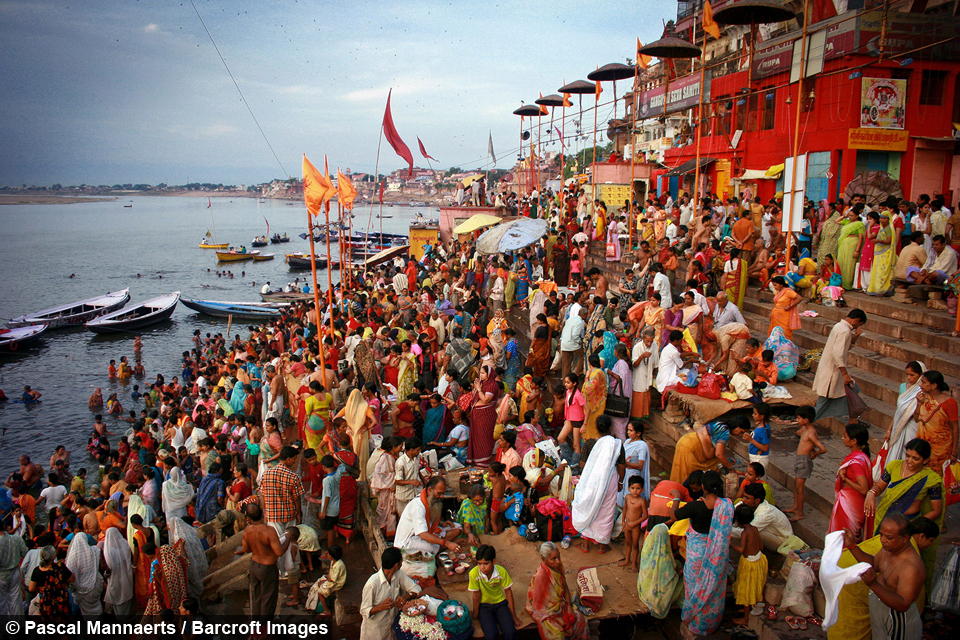Personal Pilgrimage: Finding serenity in India's oldest city
By Hannah Stevens @hannahshewans
Scroll down for the full story
Varanasi, in the northern Indian state of Uttar Pradesh, dates back to the 11th century BC and continues to entice Hindu pilgrims from around the globe to its shores.
Photographer Pascal Mannaerts, 38, has been continually drawn to its shores since 2008 after hearing enchanting tales of its beauty.
He said: “Since I was a teenager I had heard about it and already saw it in my imagination - the magnificent and timeless middle age architecture along the peaceful Ganges, the rituals of life and death that happen on the banks of the Holy river, the sãdhus and yogis wandering on the ghats, the women with their bright coloured saris along the Ganges.
“The very first time I went to India, I had to go and visit Varanasi as I could not imagine a visit to India without going there.”
Pilgrims consider the waters of the - overly polluted - Ganges River to be sacred and many elderly and sick pilgrims visit in order to die there.
Those who die and are cremated in Varanasi are thought to attain salvation and freedom from the cycle of birth and rebirth.
Despite being an ethereal and spiritual place, the city is surprisingly easy to reach for pilgrims and international tourists alike with strong train connections and a nearby airport.
But the access to and growing popularity of Varanasi amongst international and domestic tourists has begun to overcrowd the holy city.
Pascal said: “India has more and more foreign visitors each year and Varanasi is on the bucket list of many travellers.
“So more and more travellers are coming to visit Varanasi now, that is for sure.
“Varanasi is like a concentrate of all the beauty, richness and intensity of the culture and life of India found in one place.”
As Varanasi makes a name for itself on an international scale, it faces losing some of its authenticity, but Pascal believes the haunting beauty of the place will prevail.
He said: “Usually travellers and tourists are respectful of the traditions and peace in Varanasi, as they know it’s a holy place.
“But the place is changing with more foreigners visiting reach year. More guesthouses have opened in the old part of the city, along the Ganges there are more businesses and shops everywhere.
“Scams also happen and more people come to ask to sell something, even sometimes hassling you.
“The place could be considered less peaceful or less authentic than it was fifteen years ago, but these inconveniences are usually limited to the main central ghat along the Ganges.
“You can just walk five minutes and you are totally away from that.”
Famed for its production of silks and brocades and as a centre of high quality education and artistic exploration, Varanasi has an enduring culture that inspires more than a million pilgrims to visit annually.
Some of Varanasi’s most famous visitors are the sãdhus and yogīs, holy people who dedicate their lives to achieving moksa - liberation - which is the fourth and final stage of life in Hinduism.
The sãdhus and yogīs are revered for their piety and live on the donations and care of others. Their saffron clothing clearly sets them apart from the crowd, while their penchant for cannabis makes them unique amongst holy men.
For Pascal, his favourite haunt in Varanasi is along the ghats, which are the vast steps dotted across the city leading into the waters.
He said: “You can spend days on the ghats and you will not even realise that time has passed.
“Along the ghats, the peaceful, imperturbable and eternal Ganges is in front of you and all day long there is always something to see.
“From sunrise pilgrims rush to the Ganges, making their ritual ablutions, doing prayers with Brahmans, gathering with their families and friends to eat all together.
“During the day people wander peacefully, meditate, play cricket along the river, kids go to swim in the Ganges with buffalos in the afternoon.
“There are also some places along the Ganges with nothing to focus on. If you don’t want to focus on anything you can just let your mind escape to the horizon in front of you.
“In Varanasi there is a true feeling that time stands still.”

